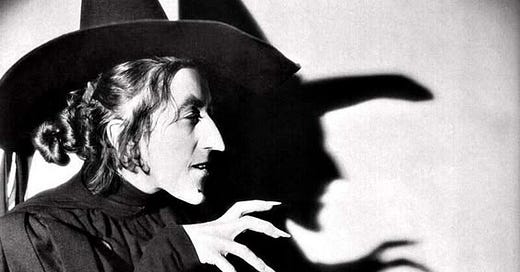Hello loves,
Today I want to share with you an excerpt from my latest release, The Monstrous Feminine Guidebook: an Astrological Guide of Dark Femininity, for the Misfits, Harlots, Bad Girls, Succubus and Other Witches made in collaboration with fellow astrologer Heloïse.
This project has been a labor of love, born of our shared desire for a more expansive view of femininity within the astrological pantheon.
We wanted to locate the unruly, witchy, fallen, dangerous women within the our traditional stellar language and help people find their own version of femininity within their own charts.
We also wanted to acknowledge the monsters made by the violence and oppression of the patriarchy while also liberating femininity from only being sweet, docile, motherly— positive only when it is serving the heteropatriarchal system.
My introduction goes into the vibe of the guidebook and more, incorporating the works of seminal figures like Anne Carson, Audre Lorde and Helene Cixious.
Read on to get a taste of the monstrous this spooky season and click the link below to purchase the Monstrous Feminine Guidebook now:
The Monstrous Feminine Guidebook: an Introduction
Welcome to our exploration of monstrous women through the lens of astrology. In this guidebook, we will explore four primary feminine archetypes and probe them for their dark undersides, bringing their chaotic, mysterious, enchanting sides to light. We created this volume to locate the unruly side of the feminine archetype within the astrological pantheon and complicate the patriarchal perspective on the feminine. Though we focus primarily on women in this work, femininity is not confined to one sex or gender presentation. Rather, we wish to open up this side of the dichotomy in all its taboo complexity so that everyone can connect with energy and power of the feminine, acknowledging its marginalized position in our culture as well as its potential for liberation.
What spurred this particular project was a continual discussion of the exiled or monstrous feminine online and in the discourse that seemed almost exclusively confined to a discussion of the astrological Lilith. Confusingly, this designation is given to multiple astrological placements: a specific asteroid, as well as the Moon’s maximum distance from earth during its orbit, and a dust cloud in space that may or may not exist. Like the biblical Lilith, this placement is often used to described the passions, deep desires, and where we also find liberation from what represses these impulses. Though we don’t want to take this placement away from those who find it useful and have built a connection to this archetype, it’s also worth noting that the Black Moon Lilith is a minor point- not as important as the planets and angles, at the very least. On top of that, there are already distinctly feminine planets in the planetary pantheon- usually defined as Venus and the Moon. Why must the monstrous be outsourced to one minor point while the primary feminine planets must stay civilized, obedient, mere objects and extension of the patriarchy?
If anything, the monstrous feminine cannot be separated from her contained, compliant counterpart. We don’t get the virgin or mother without the whore. Every maiden eventually becomes a crone, if not in age then in reputation. The very idea of the monstrous feminine is predicated on some idealized woman who fits into the patriarchy’s man boxes, a victory won only momentarily before the impossible game of respectability and purity finds you wanting again.
In this volume, we will explore the monstrous feminine through four archetypes: The Moon, Venus, Saturn and the fixed stars, primarily two serpentine stars Algol and Alphard. By locating this archetype within planets that also represent its opposite, we can integrate the two sides women must often contend with: those accepted and prized by the patriarchy and those rejected and hurt. Only through this contradictory viewpoint can the whole of the feminine archetype be accessed, its true power and potential unlocked.
What is monstrous and what makes women uniquely monstrous
The monstrous is a concept we don’t have to be taught. From when we are young, we turned the shadowy shapes of our bedrooms into potential creatures or malicious entities. Any darkness or thump in the night becomes a potential hideous creature whose very appearance from the void strikes fear in our hearts.
Though defined as a malformed or fantastical creature, real or imagined, often bent on causing us harm, the etymology of the word adds a different slant. The word “monster’ comes from Latin monstrum, meaning both “abnormal shape, monster” and "divine omen (especially one indicating misfortune), portent, sign,” deriving from monere "to remind, bring to (one's) recollection, tell (of); admonish, advise, warn, instruct, teach”. The monster does not just appear; Cassandra-like, it speaks. More specifically, its voice has a message, one that requires us to look past our knee-jerk fears or prejudices to hear.
Keep reading with a 7-day free trial
Subscribe to Recent Bedroom to keep reading this post and get 7 days of free access to the full post archives.





